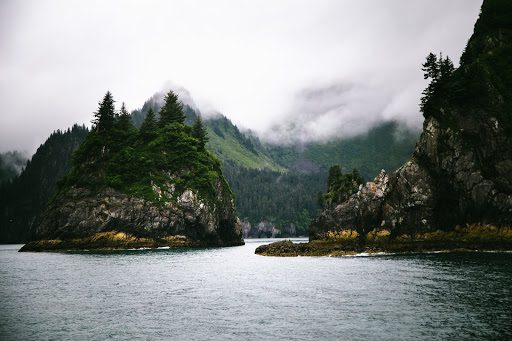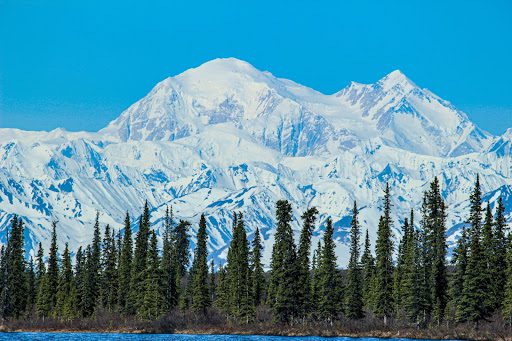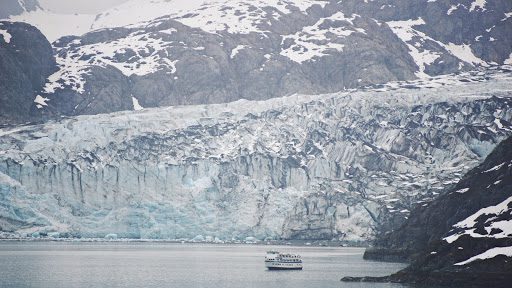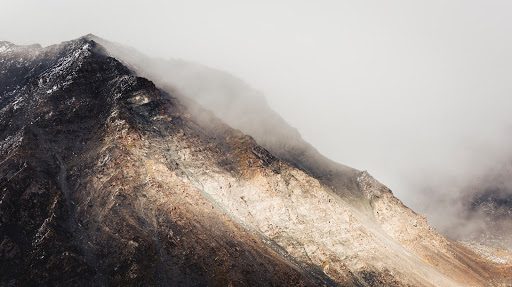The National Park System encompasses 423 national park sites in the United States. They span across more than 84 million acres in each state and extend into the territories, including parks in Puerto Rico, the Virgin Islands, American Samoa, and Guam. Many people are familiar with popular parks such as Grand Canyon, Yellowstone, and Yosemite. However, Alaska is home to 17 national parks, including some of the most and least visited in America. These vast stretches of the 49th state offer some of the most remote, gorgeous scenery in the world. The opportunities for hiking, boating, camping, and wildlife viewing are absolutely unparalleled. The scenery is spectacular and expansive – and visitors describe it as unforgettable.
By area, Alaska holds more than half of the country’s national park acreage. In addition to the 17 parks, there are 16 national wildlife refuges. The good news is that the city of Anchorage is right in the center of it all, offering a great home base for exploration of the three parks that are accessible via a car. That’s right, the other 14 you can’t drive to!
Many of Alaska’s parklands include land claims of Alaska Natives, which was an area of debate throughout the middle part of the 20th century as statehood took center stage. Alaska Natives, such as the Inupiat Eskimo, want to ensure the protection of their lands from oil and natural gas drilling and weapons testing. The natives’ voice was amplified by the newspaper the Tundra Times, which began in 1962. This led to the organization of the Alaska Federation of Natives several years later, which is now a potent political force in the state. The group worked with the U.S. government on the passage of the Alaska Lands Act of 1980, an act now seen as a historic zenith of America’s conservation and national parks movement. It designated more than 100 million acres as parks, refuges, and other protected areas.
It was and still is, a hopeful act designed to balance conflicting demands of preservation and development. Though the balance is still debated, the state’s national parks are home to numerous thriving native customs and subsistence lifestyles. There is a strong movement toward original native place names and a trust of native ecological knowledge which is guiding the current understanding of the science and beauty of each park.
From Denali to Gates of the Arctic, Glacier Bay to Katmai, these lands are glorious and soul-stirring. It may take some planning, but a trip to any Alaska national park is guaranteed to be a trip of a lifetime. You can see the highlights of some in just a day or two, or spend a month trekking through remote wilderness stretches. Most parks are best seen between May and September when long arctic summer days stretch for hours and hours. Here are a few you won’t want to miss:
Kenai Fjords
This is where the ocean, mountains, and ice meet. A three-hour drive from Anchorage takes you right into the Ice Age, where the Sugpiaq people rely on the wildlife in the icy waters and lush forests. Here, shrinking glaciers are a testament to climate change – though more than 50 percent of the park is still covered in ice. Don’t miss the glacier boat tours.

Denali
Also drivable from Anchorage (a nine-hour trek, so plan to overnight at one of the park’s entrance hotels before you start exploring), Denali is so much more than the mountain it’s named after. It’s more than six million acres that stretch across alpine valleys and soaring peaks, the highest of which is America’s highest mountain, the eponymous 20,310-foot Denali (previously known as Mount McKinley). The park’s main road hits many of the highlights – and you may see some of the park’s 30 different species of mammals.

Wrangell-St. Elias
The rugged and beautiful Wrangell-St. Elias is America’s largest national park. A more than seven-hour drive from Anchorage, it’s full of volcanoes, glaciers, towering mountain peaks, and a diversity of wildlife including caribou and moose, sea lions, and harbor seals. It includes two historic towns, McCarthy and Kennecott, which are worth a visit as well. Consider rock climbing, hiking, or even a leisurely stroll on a shorter walking trail to take in the views. Its namesake, Mount Wrangell, is one of the largest active volcanoes on Earth.

Glacier Bay
A popular stop for cruise ships, Glacier Bay is known for its whale watching. You’ll need to fly in from Juneau to the small town of Gustavus, then transfer to a boat, which is the best way to see this park’s grandeur. Glacier Bay is one of the world’s largest protected Biosphere Preserves and a UNESCO World Heritage Site. There are plenty of opportunities for backcountry camping as well as ranger-led tours on subjects from totem poles to marine life.

Gates of the Arctic
You can’t get much further north than this – and word is that this least-visited park in America is absolutely extraordinary. You’ll be within the Arctic Circle when you reach the fields beneath the Schwatka and Endicott mountains. This is the real deal, scarcely-touched land. Your hiking home base might be the small town of Coldfoot, and you’ll need a charter plane to get in the park. This is vast land without any roads or trails. The rewards are significant – the aurora borealis in the darkest night, a trip down a river unchanged by humankind, and the sight of huge herds of migrating animals and birds.
These parks are literally just the tip of the iceberg! If you’re looking for more, consider Lake Clark’s stunning mountains or watch bears hunt and salmon run at Katmai.






